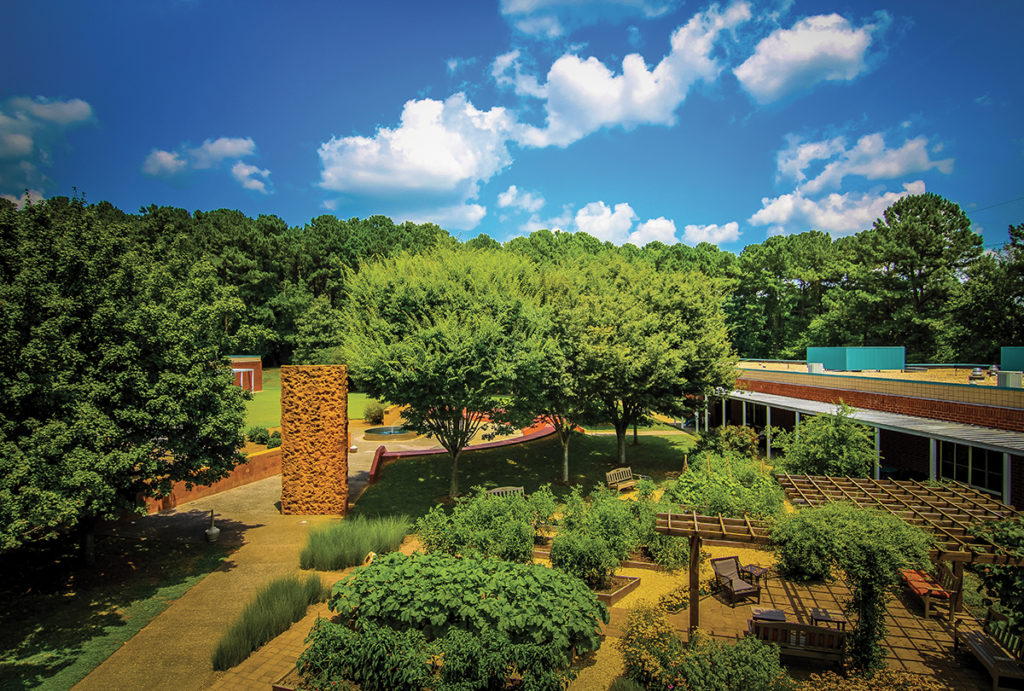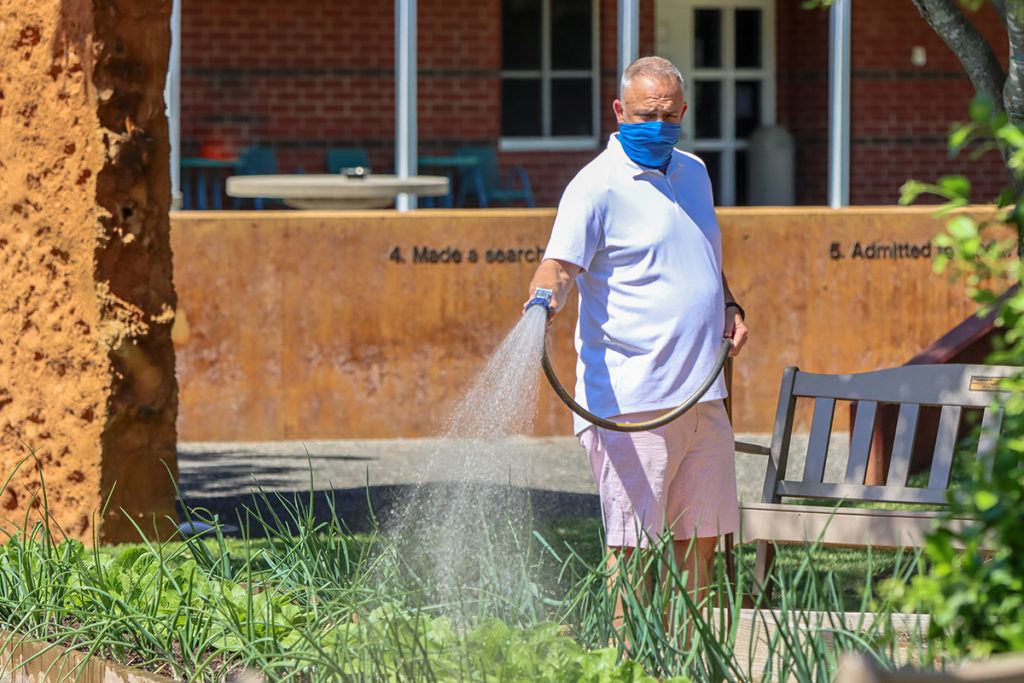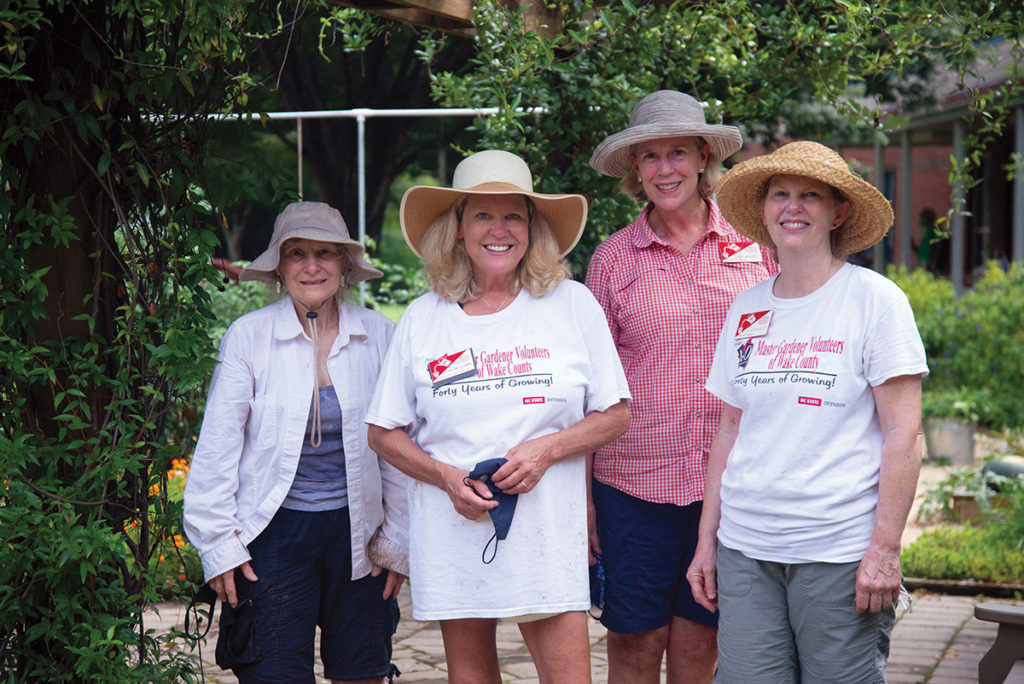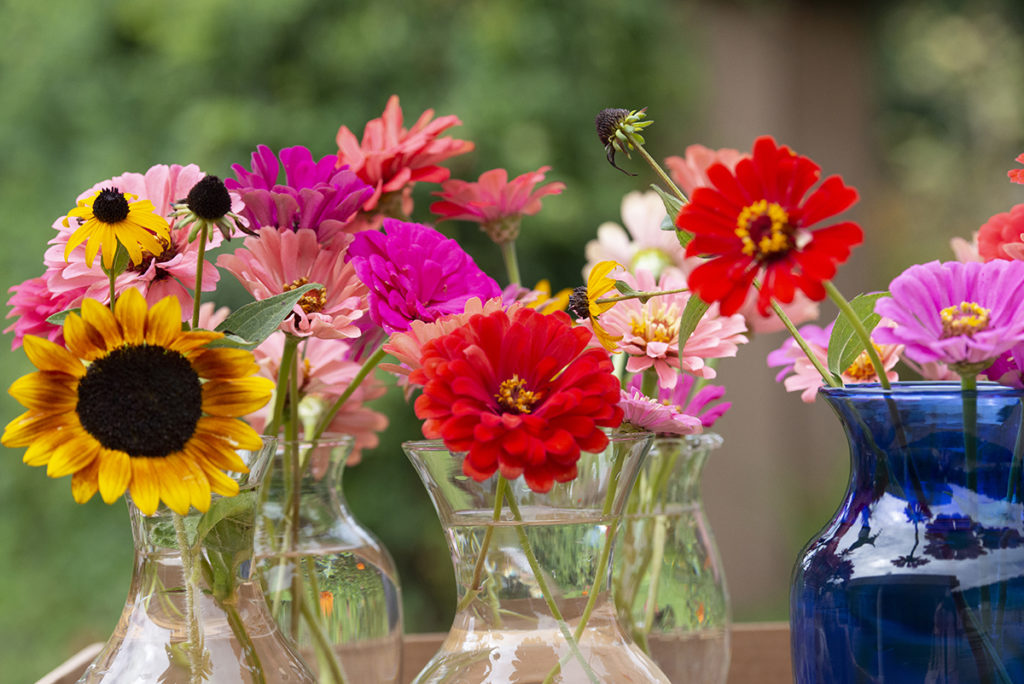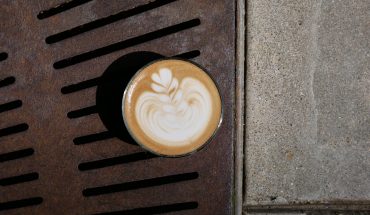At Healing Transitions, a unique green space with sculptures by Thomas Sayer offers an unexpected approach to recovery from addiction.
By Catherine Currin
Inside the Healing Place Courtyard, an earthcast archway by Thomas Sayre marks one end of a gravel path; a rectangular monolith marks the other, and between them is a reflecting pool. All around is the lushness of summer: jaunty zinnias, sunflowers and cosmos stretching toward the sky; tomato plants heavy with fruit; fragrant basil, bushy and full. The space is striking, but it serves a deeper purpose here, with nature offering both the work and the reward for those recovering from drug or alcohol addiction.
“At first, being a steward to the garden seemed like a strange way to spend time in recovery. I didn’t see the similarities of the two,” says Paul Keelen, a Healing Transitions alumnus. “But today, I’m not sure I can see any of the differences. Water the plants, pull weeds, work hard, get dirty, enjoy the smells and sights all around you, and you’ll reap rewards. The two are the same.”
The Healing Place Courtyard is part of Healing Transitions’ men’s campus in Dorothea Dix Park. It’s in the center of the organization’s residential facilities, a peaceful refuge to reflect or congregate. Healing Transitions executive director Chris Budnick says that the outdoor space, which was created in the early 2010s, is now an integral piece of a participant’s recovery. “It can help through a number of things — it gives detox guests hope to look out and see program participants laughing and smiling, or offers a path forward when new participants interact with older participants and alumni in the courtyard,” says Budnick.
“Slowing down and enjoying the present moment is a big one. This has many parallels with recovery and life,” agrees Keelen, who spent 15 months in the program at the men’s campus and is now almost six years into recovery. One of his jobs during the program was working as a “scarecrow,” managing the garden alongside volunteers from the North Carolina State Extension Master Gardeners of Wake County. “Working with the master gardeners gave me a sense of connection to folks outside of the recovery world,” says Keelen. “I was able to harvest the garden and prepare and serve the food that I grew to my fellow participants, which gave me a great sense of purpose and joy.”
Master gardener Cris Clemons started volunteering at Healing Transitions in 2014 through NC State’s extension program. “I was excited to be a part of this initiative as my brother-in-law was suffering from substance abuse,” says Clemons. “I loved the idea of people that are working toward recovery having an opportunity to learn gardening skills and the joy of growing your own food and flowers.”
The courtyard was designed by Sayre, who has said his earthcast sculptures represent a metaphor for a healing path away from the stronghold of addiction. “At one side of the space there is a barrier-like structure, a monolith that’s in your way. We all have barriers in our life,” Sayre says. “But across from the barrier is an open door of opportunity. The closed door fits dimensionally within the open arch, but to get to that open door, you have to encounter the sections of Healing Transitions’ program.”
The space is both visually compelling and extremely functional: the words of the 12 steps of recovery line the walls, while nearby tiered, circular seating lends itself to all types of community gathering. Sayre, who creates his signature earthcasts all over the world, says this is one of his most important projects: “It’s not always the case that I can work with a community that’s so focused. The importance of their work made my work important.”
The sculpture in the garden can be seen from across the facility and accessed throughout a participant’s journey with Healing Transitions, says Budnick. “The most significant piece of Thomas’ design is it creates hope to be transmitted, and for recovery to be cultivated,” says Budnick. Sayre is pleased with how the garden has grown and incorporated his work over time: “The gardeners have improved it vastly, tending to the space with such care.”
And while the Healing Place Courtyard is geared toward participants in Healing Transitions’ recovery program, its beauty offers everyone a reminder of the benefits of slow and steady work, and being present in the moment. “Gardening can be very meditative, and I think that is beneficial for all of us, not just those seeking recovery,” says Clemons. “It can be hard work, so there is the discipline of doing something for the common good of all the participants. It’s very rewarding to see people eating the vegetables you harvested for lunch, or to see the flowers you grew on the dining room tables.”
Keelen, who still attends meetings in the Healing Place Courtyard today, says gardening can teach us so many things about life in general — as well as recovery: “While in addiction, everything was about instant gratification and going a million miles an hour. But here, the process of keeping a neat, weed-free environment for the plants reminds me that I need to weed out the static and unwanted, untrue thoughts in my mind. I can cultivate a healthy space within myself.”
This article originally appeared in the August 2022 issue of WALTER Magazine.

